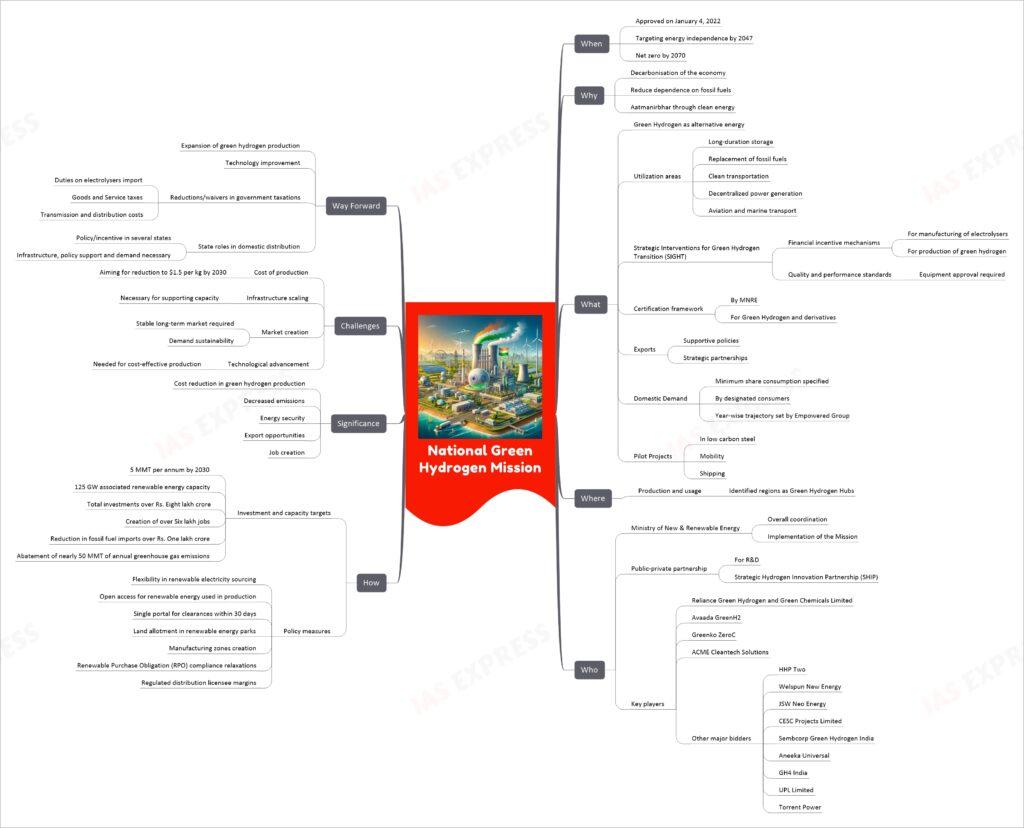National Green Hydrogen Mission

India’s Green Hydrogen Mission, approved on January 4, 2022, is a pivotal initiative towards achieving energy independence by 2047 and net zero by 2070. Its overarching objective is to make India a global hub for the production, usage, and export of Green Hydrogen and its derivatives. This mission includes strategic interventions like financial incentives for manufacturing electrolysers and producing green hydrogen, a certification framework for green hydrogen, and the development of Green Hydrogen Hubs. Key players in this mission include major energy and industrial companies like Reliance Green Hydrogen and Green Chemicals Limited, Avaada GreenH2, and Greenko ZeroC.
The mission aims to develop a green hydrogen production capacity of at least 5 Million Metric Tonnes (MMT) per annum by 2030, with an associated renewable energy capacity of about 125 gigawatts. This ambitious target is expected to attract significant investments, create jobs, reduce fossil fuel imports, and decrease greenhouse gas emissions. The mission also outlines policies for more flexible sourcing of renewable electricity, land allotment for green hydrogen projects, and manufacturing zones creation, aiming to reduce the production cost and scale up infrastructure.
However, the mission faces challenges in cost reduction, infrastructure scaling, market creation, and technological advancement. The way forward includes expanding green hydrogen production, improving technology, and implementing reductions or waivers in government taxation policies. Several Indian states are also playing a role in domestic distribution with their policies and incentives for green hydrogen.
In summary, India’s Green Hydrogen Mission represents a significant step towards a sustainable and self-reliant energy future, focusing on green hydrogen as a key element in the country’s energy transition strategy.

